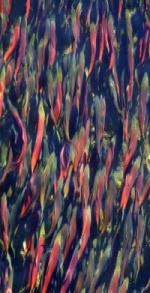NetMap as a Service
Although NetMap contains numerous advanced tools for users to conduct their own analyses, TerrainWorks applies all or most tools for clients (e.g., NetMap as a service) and delivers a full set of analyses and model outputs (including those listed below). Data outputs are easy to understand and apply and are supported by a full set of online documentation to aid in interpretation and decision support. Tools can also be accessed by annual license. See full tool list.
NetMap's virtual watershed and synthetic river networks are customizable and retain flexibility to meet your analysis and decision support needs.
Access NetMap as a Service Contact us
 30 Different Types of Powerful Analyses
30 Different Types of Powerful Analyses
Channel Hydraulic Geometry Floodplains Historical Floodplains
Stream Power/Substrate Sinuosity Stream Order
Define Fish Habitat Habitat Quality Habitat Diversity
Channel Classification Subbasin Classification Beaver Habitat
Thermal Sensitivity Shade/Thermal Energy Wood Recruitment
Thermal Refugia Delineate Riparian Zones Landslide Potential
Debris Flow Potential Gully Potential Surface Erosion, incl. Pre- & Post Fire
Sediment Delivery Road Drainage Diversion Road Stability
Road Surface Erosion/Delivery Habitat Length above Roads Roads in Floodplains
Wildfire Risk Cascade Climate Change Vulnerability Identify Highest Priorities
Applications
Forestry Riparian Management Slope Stability Roads/Pipelines
Floodplain Mapping Erosion/Sediment Budget Fisheries.Bio-Hotspots
Watershed Analysis Restoration Conservation Urban Planning
Monitoring Estuary Mapping Ecosystem Services Regulatory
Personalized Hazard Assessments Risk/Insurance Education
Research Wildfire-Pre Wildfire-Post Climate Change
See More details about NetMap as a Service below:
- A Virtual Watershed that consists of five benchmark features: 1) digital elevation or digital terrain models (of the highest resolution available, 10 m digital elevation models [DEM] or LiDAR, or mixture), 2) routed and attributed synthetic stream layer, 3) landform and process characterization, 4) landscape and land use discretization and 5) connectivity, including river-terrestrial coupling. Read More.
- A consistent and adjustable synthetic river network (e.g., GIS stream layer). NHD/NHDPlus compatible. Read more.
- Drainage wings, local contributing areas located on both sides of approximately 100-m long channel segments (with left channel-right channel distinction) to connect terrestrial processes, landforms and land uses directly to stream channels. Read more.
- Floodplain and flood zone mapping at multiple elevations above the channel; map historical floodplains, terraces and fans with high resolution DEMs. Read more.
- Identify aquatic habitat distribution, abundance and quality for anadromous and resident species. Includes salmon, resident cutthroat trout and beaver habitats. Read more.
- Quickly calculate the cumulative fish habitat length and quality upstream (and downstream) of all road crossings. Read more.
- Predict the thermal in-stream sensitivity to thermal energy. Read more.
- Evaluate the effects of current stream side vegetation conditions on thermal energy and where additional riparian shade would be the most effective. Combine this with fish habitat quality, use for watershed restoration prioritization. Read more.
- Estimate the current riparian vegetation controls on in-stream wood recruitment at the watershed scale- useful for restoration planning. Read more.
- Identify locations of aquatic thermal refugia by combining intrinsic landscape position (latitude, solar angle, topographic shading, stream width and orientation) and current streamside vegetation conditions (height and basal area). Four types, including confluences. Read more.
- Delineate riparian zones using a combination of floodplain extent (can be limited), wetland areas (optional), in-stream wood recruitment and shading-thermal energy. Read more.
- Predict locations of heightened risk for slope instability. Read more.
- Wildfire risk - translate to stream segments to identify overlaps between predicted fire risk and severity and sensitive aquatic habitats, including water quality concerns. Pre-wildfire planning. Read more.
- Following wildfires, determine where the greatest hazards exist for extreme erosion events and consequent impacts to aquatic, riparian and road systems. Post-wildfire planning. Read more. Wildfire Cascade tool - Read more.
- Estimate the potential for roads, particular forest roads, to alter hillslope drainage patterns, or to concentrate road drainage. Read more.
- Determine which unpaved roads have the greatest potential to cause road-surface erosion and sediment delivery to streams. Read more.
- Estimate which road segments may pose the greatest threat to slope stability. Read more.
- Map several different downscaled climate change forecasts to stream networks to visualize intersections between potential climate change stressors and numerous watershed attributes, including aquatic habitats and wildfire risk. Read more. Climate change vulnerability tool. Read more.
- NetMap's virtual watersheds coupled to analysis tools support watershed scale restoration planning. See more.
- NetMap supports conducting watershed analyses. Read more.
- NetMap supports forest planning. Read more.
- NetMap is NHD/NHDplus compatible (under development, ready by 9/15). Read more.
If you do not see a capability that you need or need to modify an exsisting one, we build custom tools. Read more.
See analysis types:
